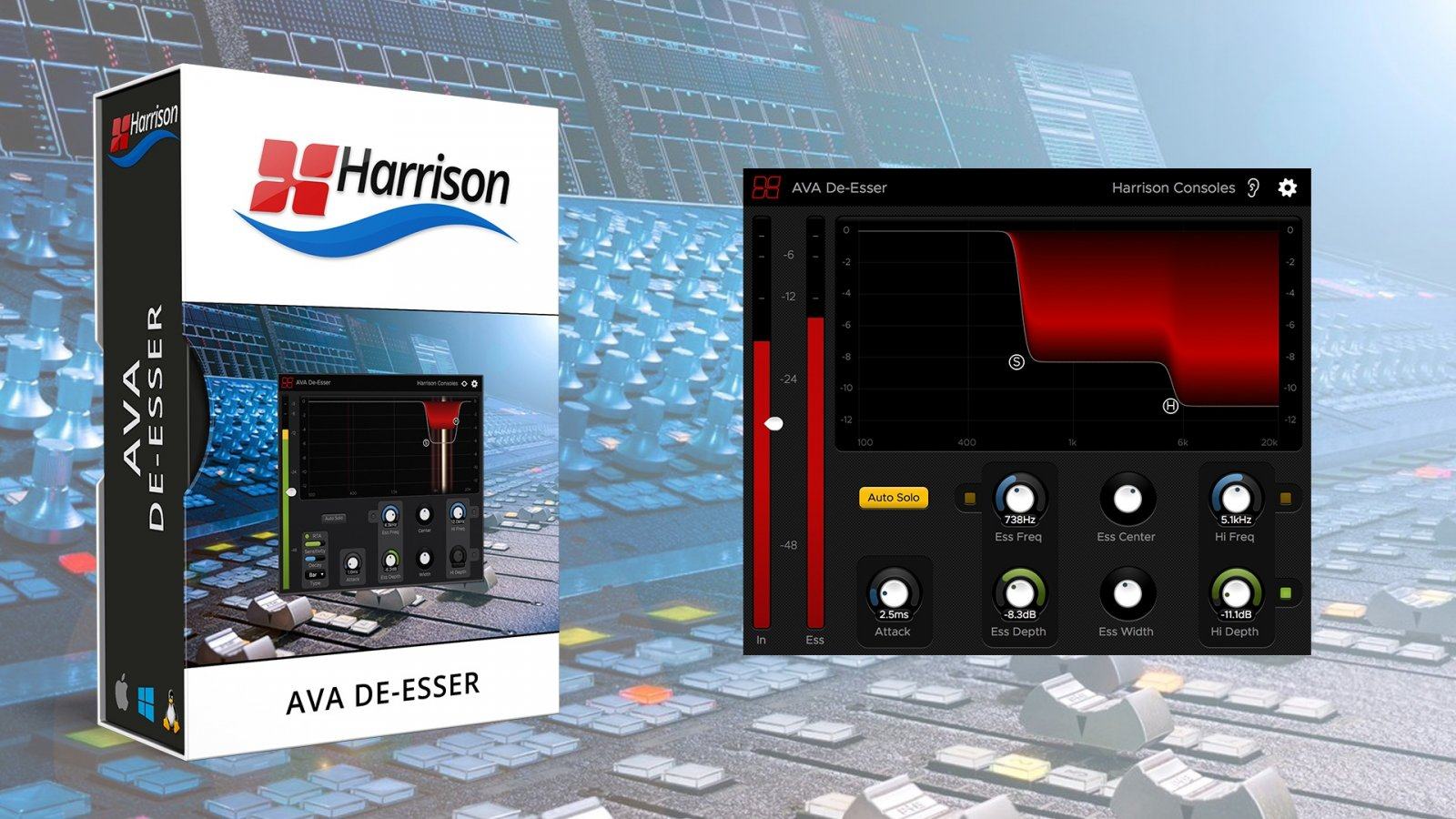









AVA De-Esser
The AVA De-Esser is the latest implementation of Harrison’s renowned De-Esser algorithm,
used in ultra high-end post & film facilities worldwide.
Now in the fourth generation,
the Harrison De-Esser algorithm has been continuously tweaked by our customers in high-end music, film, broadcast, and video post-production.
Harrison’s reputation for “true analog in the box” sound is due to our unique development heritage,
where we first created an analog processor and then converted the processor to digital while retaining the sound and character of the original.
The AVA De-Esser implements Harrison’s 4th-generation algorithm that is tuned to detect and eliminate harsh sibilance.
The results are quintessentially “Harrison”: effortless, smooth and transparent.
Controls
Graph
The main display graph provides control of the De-Esser band frequencies and depths.
Drag the “S” or “H” controls to adjust the “Ess” or “Hi” band frequency and depth.
TIP: Click anywhere in the graph to simultaneously drag the band depths and center frequency.
You can also scroll to adjust the bandwidth.
This is the fastest way to adjust the most important De-Esser Controls.

Input Meter, Threshold, and Ess meter
The “Threshold” slider for the effect is overlaid on the input (“In”) meter.
Lowering the threshold will increase the sensitivity of the de-esser effect.
The “Ess” meter indicates the signal level inside the ess band.
If the frequency band is set correctly for the source material, then this meter will peak when Essy material is present.
Ess Freq and Ess Depth Control - This section allows you to pick the low-frequency cutoff (200 Hz - 8kHz) for the Ess, and the max attenuation for the signal (-12dB - 0dB).
Hi Freq and Hi Depth Control - This section features a shelving unit to tame some of the higher frequency (2 kHz - 12 kHz) content after you’ve pulled out the ‘Ess’.
Max attenuation for the shelf is -12dB.
Ess Center and Ess Width Control - The ‘Ess Center’ control allow you to adjust both the Ess Freq and Hi Freq controls together allowing you to move the entire Ess Band in unison.
The ‘Ess Width’ control allows you to control how wide or narrow the Ess bandwidth is.
Attack - The ‘Attack’ knob controls how long it takes the signal to get from zero to full attenuation. (200μs - 20ms)
Auto Solo - Enabling ‘Auto Solo’ allows to you automatically audition your Ess Band as you change the parameters to really dial in the exact frequency and bandwidth of the Ess signal.
Auto solo also works for auditioning the Hi Band when adjusting the Hi Freq control.

Features
Intelligent algorithm operates on harsh sibilance while ignoring other fricatives.
Band Solo and Auto-Solo features to help dial-in the sibilant frequency range.
Capable of up to 12dB reduction in sibilance.
Adjustable threshold & depth allow fine control over the processor’s onset and strength.
Fast and easy-to-use interface with 6 control dimensions accessible in the main graph.
Zero-latency processing, suitable for “live” use.
Gain-reduction meter appears on Pro Tools (AAX) and Studio One (VST3) mixer strip.
The “Ear” icon engages the momentary-bypass function, which allows you to audition the un-affected signal while you hold the mouse button; then restores the settings when you release the button.
The “Gear” icon launches a menu with additional features including resizing, theme selection, and plugin version number.
The alternative “Vintage” theme uses the colour scheme of Harrison’s large-format console software.